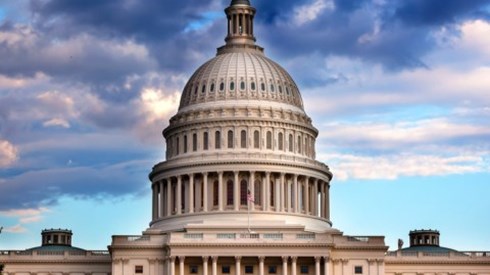Risk Retention Groups in 2021—Challenges and Opportunities

Christopher Diemel | June 07, 2021

In January 2020, a hearing was held on H.R. 4523, the Nonprofit Property Protection Act. The bill sought a limited expansion of the Liability Risk Retention Act to allow a small subsector of risk retention groups (RRGs) to write property coverage. The hearing provides a good lens for examining the challenges and the opportunities facing the risk retention group industry in 2021—the hard market, the recent insolvencies, and the relationship of the RRG industry with the National Association of Insurance Commissioners (NAIC).
At the hearing, Missouri Department of Commerce and Insurance Director Chlora Lindley-Myers testified against the expansion on behalf of the NAIC. In her testimony, Ms. Lindley-Myers stated that risk retention groups have a higher historical insolvency rate than admitted insurers and have had an insolvency rate nearly twice that of admitted insurers over the past 10 years. It is unclear where the data was sourced, as Ms. Lindley-Myers did not provide a citation.
Furthermore, by limiting her data to the last 10 years, Ms. Lindley-Myers is excluding the hard market of the 2000s where risk retention groups outperformed traditional insurers.
One note on the following analysis is that different reports use different terminology—"impairment," "liquidation," "insolvency," etc.—that are not the same but carry similar connotations. Many insolvent companies are later liquidated, as are many impaired companies. The data for RRGs will be focused on liquidations, both because it is the most serious outcome and because it is the most common outcome for impaired companies.
The Risk Retention Reporter has complete information on risk retention group liquidations—a narrower term than insolvencies. Since the passage of the Liability Risk Retention Act in 1987, there have been a total of 521 risk retention group formations and 49 RRGs were later liquidated for an overall liquidation rate of 9.6 percent.
Industry-wide data on liquidations is spotty, but the best resource is A.M. Best. A.M. Best put out its report 2018 US Property/Casualty Impairments Update December 11, 2019, just before the hearing mentioned previously. That report defined "impairments" as "conservations," "rehabilitations," or "liquidations."
The A.M. Best report looked at impairments from 2000 to 2018, and in that time frame, there were 374 impairments. Best notes that the share of impairments for RRGs grew from 4 percent of total impairments in the 2000–2005 period to 18 percent of impairments for the 2011–2015 period.
However, the number of operational risk retention groups grew from 65 in 2000 to 262 in 2008, a more than fourfold increase in the number of operational RRGs, so a proportional increase in the number of RRG insolvencies is expected.
Even so, the 2010s were a tough decade for the risk retention group industry, much like the 2000s were for traditional insurers. The worst period for impairments was 2000 to 2005 when 129 insurance companies, of which just 6 were RRGs, became impaired.
A.M. Best also has data on the overall liquidation rate for insurers in the report Best's Impairment Rate and Rating Transition Study (for 1977 to 2015, December 7, 2016), which the Risk Retention Reporter last looked at in 2017.
That report found that 3.4 percent of insurers with A– ratings wind up entering liquidation over a 15-year period. That figure increases to 5.24 percent for insurers with a B++ rating and to 10 percent for insurers with a B rating. Overall, 4.78 percent of all companies rated by A.M. Best will go insolvent over a 15-year period.
There are some caveats with the liquidation data in the A.M. Best report. First, the liquidation data is based on the net impairment rate, meaning that per A.M. Best's calculation methods, companies that dropped their rating before becoming impaired, and later insolvent, are excluded.
Secondly, the report only considers insurers that have at some point carried an A.M. Best rating. The A.M. Best report on all property-casualty insurer impairments since 2000 found that only 44 percent of impaired companies had ever carried an A.M. Best rating.
With all that said, how does the overall liquidation rate of 9.6 percent for risk retention groups compare? Doubling the 15-year liquidation rate for A.M. Best-rated insurers, since around only 44 percent of impaired companies have ever been rated, gives a liquidation rate of 9.6 percent. Pretty much a wash.
In the end, it is likely that risk retention groups outperform traditional insurers during hard market conditions and in the years following the hard market but perform worse in prolonged soft market conditions.
Risk retention groups were formed in response to the historic hard market for liability insurance in the mid-1980s. As such, it makes sense that they perform best in those market conditions. However, many RRGs have become permanent solutions for the liability needs of their members, surpassing their initial role as a safety valve during the hard liability market.
Now that the insurance industry has entered another hard market, numerous articles have focused on the surge in captive formations and whether risk retention groups are lagging—are risk retention groups even a significant part of the captive industry?
Comparing risk retention groups to captives generally is a bit uncharitable. RRGs are the open book of the captive industry with data on formations, financials, and failures available. This makes it a lot easier to do research and identify bad actors in the RRG industry. That really isn't possible with captives generally, though the industry has its own struggles with tax decisions pertaining to 831(b) captives.
A significant part of the current hard market also relates to property coverage, which RRGs cannot insure. Risk retention groups are by design much more niche than other types of captive insurers.
It is clear, however, that risk retention groups are major players in the liability insurance space. According to Demotech, Inc., risk retention groups wrote medical professional liability (MPL) premium of $2.0 billion in 2020, representing 19.1 percent of total 2020 MPL premium of $10.1 billion. In some states, such as New York, the risk retention group share of MPL premium is closer to a third.
Other lines of coverage are tougher to pin down. Nonprofits Insurance Alliance Founder, President and CEO Pamela Davis estimates that Alliance of Nonprofits for Insurance, Risk Retention Group (ANI) insures 8 to 10 percent of the community nonprofits in the states it operates in.
However, ANI does not insure some of the major nonprofit categories such as hospitals or universities. "I would estimate that we probably insure a third of animal rescues in some of the states in which we operate and up to 50 percent of the foster family organizations in some states," said Ms. Davis.
While H.R. 4523, the Nonprofit Property Protection Act, did not make it out of committee, compelling testimony was given for the expansion. The death of the bill may partly be due to timing.
In the months following the hearing, the country was consumed by the impeachment hearings and later the coronavirus pandemic and the protests following the death of George Floyd. Any bills not dealing with those issues fell to the wayside.
Furthermore, while Ms. Lindley-Myers' testimony was quite critical of risk retention groups, testimony at a politically charged hearing is not a stand-in for the overall feelings of the NAIC regarding risk retention groups.
The NAIC Risk Retention Group (E) Task Force recently developed a new RRG registration form and new FAQ and best practices documents with input from the National Risk Retention Association—the national association for risk retention groups.
Over the past few months, RRG formations have begun to pick up, but it may be wise to temper expectations. Risk retention groups have already achieved significant penetration in the liability marketplace, and the long-term success of risk retention groups in many business sectors may limit the need for new RRGs in those sectors.
Marks of success for risk retention groups in the current hard market will likely be focused around continued premium growth and established RRGs capturing a larger portion of the overall liability marketplace.
Christopher Diemel | June 07, 2021





